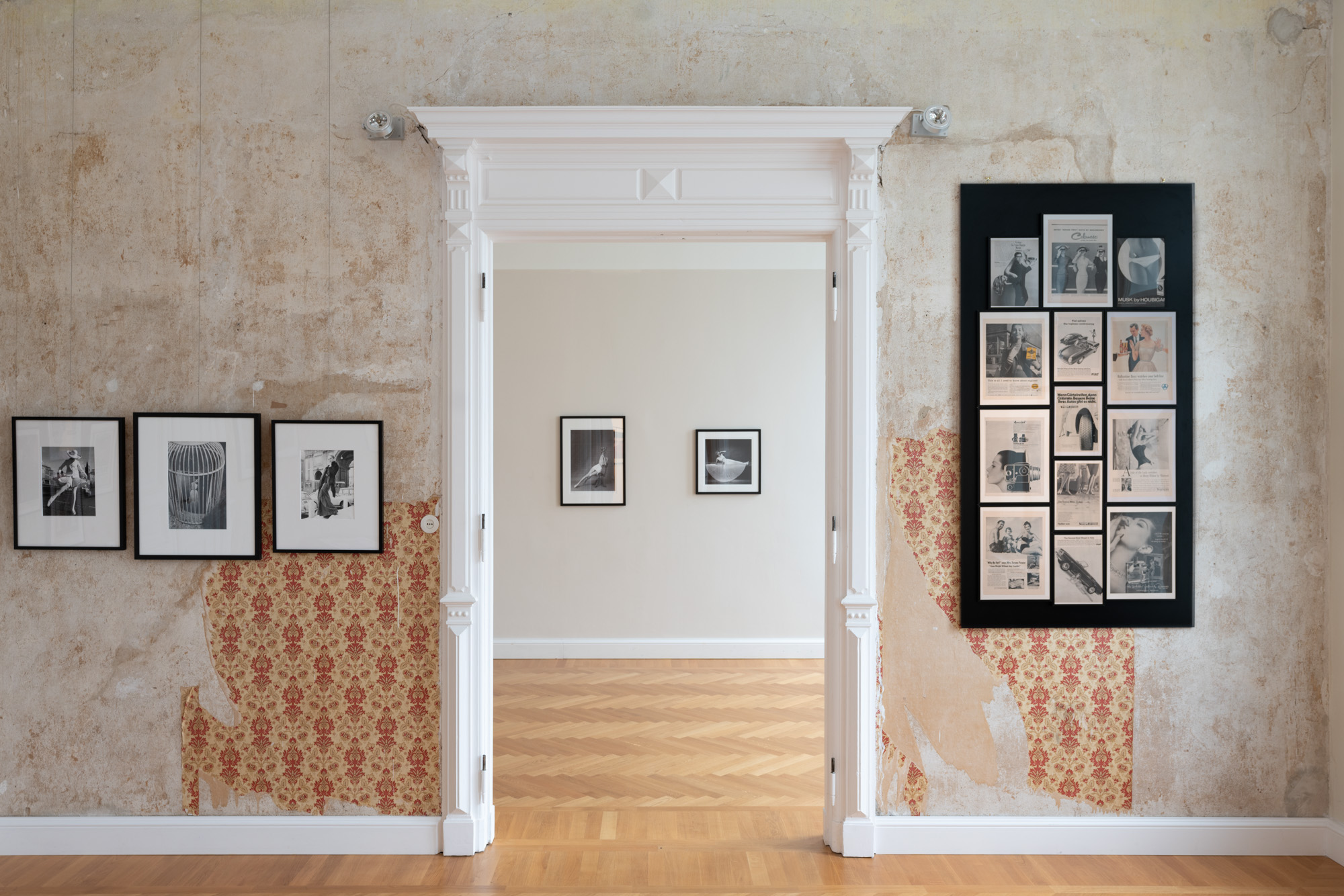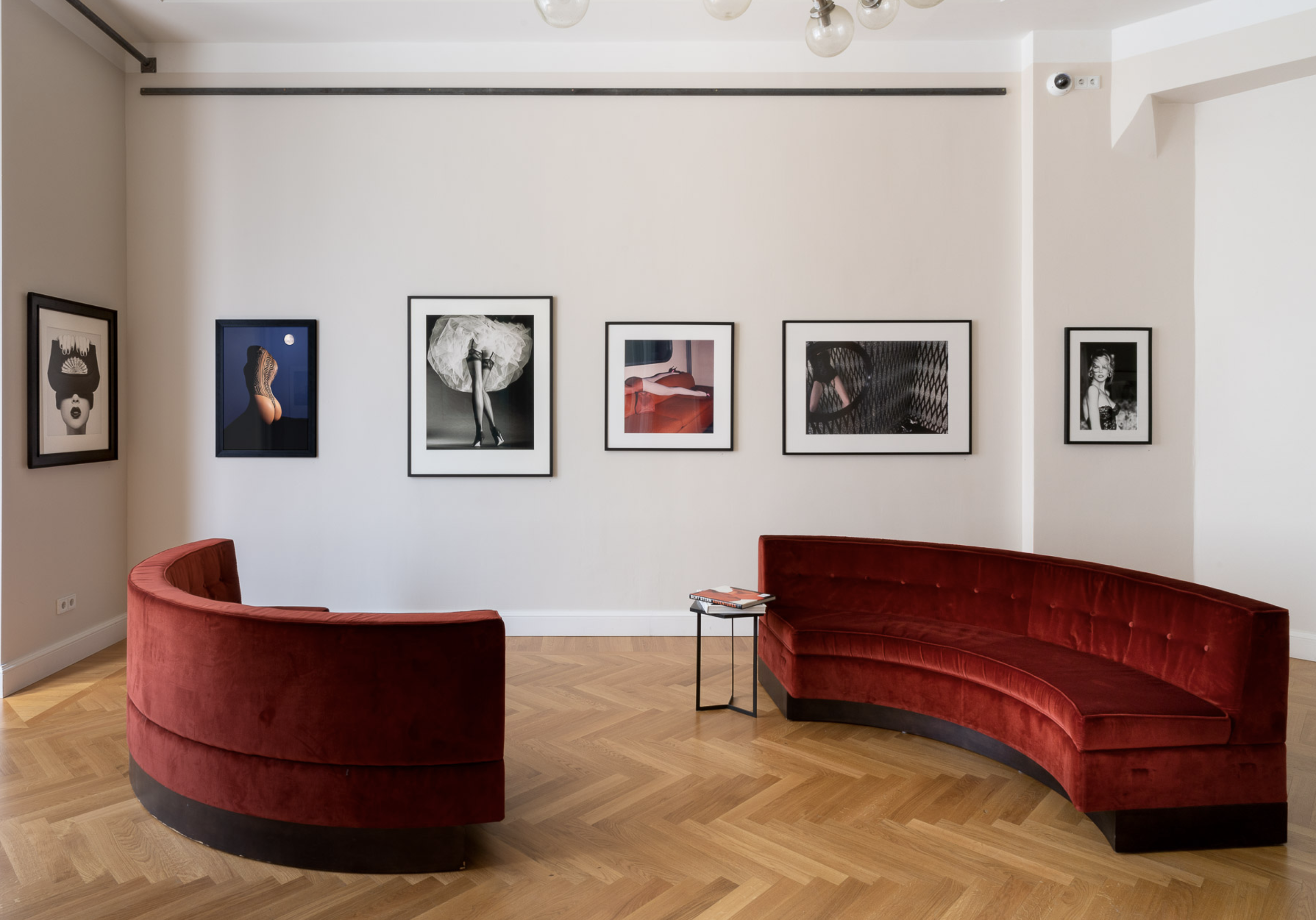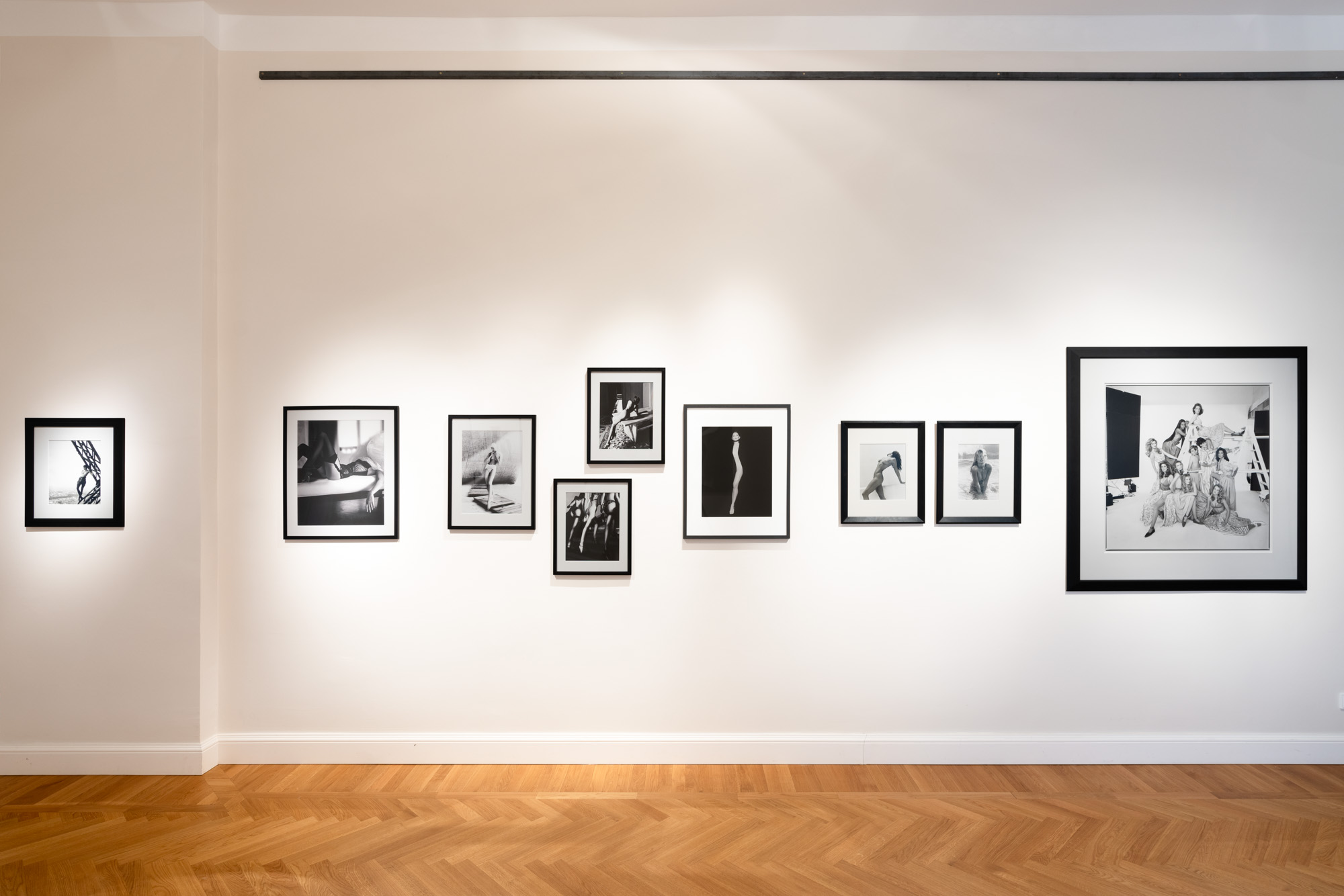Woman on View
February 2nd - April 27th, 2019
The depiction of the nude and its ideal human figure holds a long tradition in Western art. The rise of Modernity liberated nudity from religious or allegorical contexts and showed it openly, naturally and often in connection with Eros. Today, images of the naked body, overwhelmingly female, have proven so omnipresent that the advertising landscape would be unrecognisable without them.
Since the dawn of advertising, the female body has been used to heighten the marketing appeal of products, while male nudity was barely utilised until the late 20th century. Accordingly, models shown in publicity embody the ideal image of feminine beauty as synonymous with specific Western standards. Yet the constant renewal of these standards demonstrates the absence of a static or uniform canon of beauty in their depiction over the different decades. In fashion and advertising photography in particular, there has been a noticeable paradigm shift from selling products to selling lifestyles.
The group exhibition Women on View addresses the eroticisation of the female body in advertising photography – starting with early product advertising from the 1940s, through the era of the hyper eroticisation of women in the 1990s, to contemporary positions in advertising photography. The exhibition features legendary posters and photographs by renowned artists such as Erwin Blumenfeld, Horst P. Horst, Irving Penn, Helmut Newton, Guy Bourdin, Frank Horvat, Jeanloup Sieff, Hans Feurer, Albert Watson, Herb Ritts, Peter Lindbergh and Ellen von Unwerth. On the one hand, the exhibition illustrates the various ways in which women are portrayed in advertising. On the other hand, it questions the reciprocal influences of fashion and commercial photography in the creation of aesthetic standards.
Frank Horvat, Model with Mask, Paris, 1958
Furthermore, the exhibition aims to reflect the sociocultural impact of marketing imagery. Advertising functions as a mirror image of social attitudes, and as such is influential in defining role models and engraining notions of beauty. In today’s media-dominated world there is an ever growing tendency to disseminate more standardised values of attractiveness and beauty. Over the last decades, the use of a visual language in which female models were depicted in an objectified and provocative way led to a drastic sexualization of the public sphere. To what extent are contemporary portrayals of women still a testimony of the value society assigns to attractiveness? Is the depiction of female qualities as ideals of beauty an ineffable value, or is it an inclination in motion?
On the occasion of the exhibition, an extensive bilingual catalogue will be published, with a foreword by the curator of the Helmut Newton Foundation, Matthias Harder, texts by sociologist Esther Loubradou, and numerous historical advertising photographs.
Installation views, Chaussee 36, 2019





